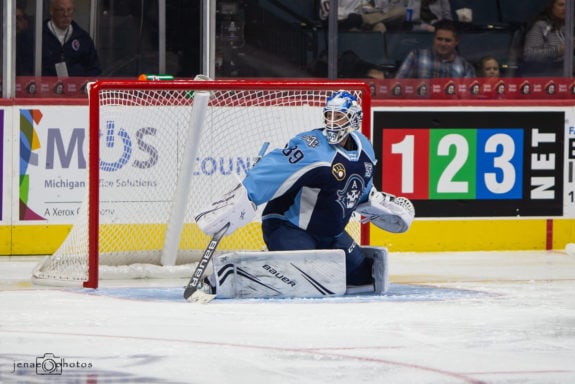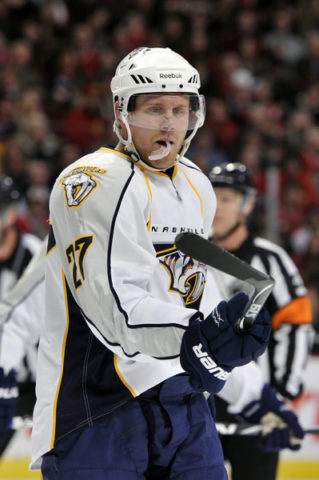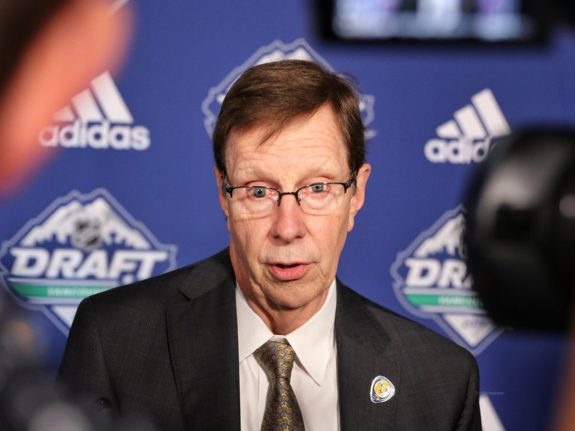Despite an early playoff exit, there is plenty to look ahead to this offseason. The Nashville Predators have seven picks in their pocket this year, the earliest of which is their own first-round selection, which sits at 18th overall. The Predators have an extra fourth (Colorado Avalanche) as a result of the Austin Watson trade, but are missing their seventh-round pick, which they traded for Connor Ingram. That deal looks even better today, but you can’t always move a late pick for a good player that another organization wants to rid themselves of. Refocusing on the draft, the Predators have a few things to focus on especially closely this time around.

After combing through the annals of the Predators’ draft history, there are a lot of conclusions one could draw about the success and failures of past results. As a general example, the Predators have had above average success with goalies and defencemen, while drafting and developing forwards has been a struggle. However, with a unique draft like the 2021 class, there are a few specifics the Predators’ brass and scouting staff will want to keep in mind. Chief among them is the effect of the pandemic, and how that will change approaches and strategies.
Scouting
Looking at the 2021 Draft, there has been no prior year like this one that it can really be compared to. This year all of the scouting has been done virtually, players are playing at different levels if they even got to play at all, and there is no consensus No. 1 pick. Owen Power, a hulking defenceman with speed and passing ability, seems to be the favourite to be selected first, but there are a dozen players that top the lists of many of the more highly regarded scouts in the public sphere. The depth of the draft is also very heavily debated, with some claiming that this year will compare to 2012 when there were only a handful of all-star level players to find, meanwhile others claim that the draft has 40 first-round level prospects.
Related: The Hockey Writers 2021 NHL Draft Guide
This year, with the inconsistencies in who has played, how much, and where, the Predators need to take advantage of the fact that some players didn’t get the opportunity to raise their draft stock as would have happened in a normal year. As opposed to looking for another fourth-line grinder or depth, shutdown defenceman in the late rounds just to try and get some return on investment, use this year to take some bigger home-run swings. Aim for the high-upside guys here, because there is likely a bit more of an opportunity to hit it out of the park than usual. Some of these players may also be a little slower to reach their potential in future seasons due to the developmental delay that a missed/partial season has caused. However, if they can still get there, there is a lot of upside that will be available outside of the first round of this year’s draft.
Pivoting to video scouting and succeeding in properly assessing talent through a modified medium will, in the end, be the key factor in whether teams are successful or not at the draft table in 2021. For the Predators’ staff, where the youngest of the group is at least a decade older than Pekka Rinne, adapting to these new systems may not be quite so simple. If there was ever a year to have brought in outside scouting help, now was the one to do it. With plenty of game tape recorded that the team of scouts are likely still pouring over, getting some fresh perspectives may help differentiate the needles from the hay.
Historical Success
The Predators’ entire scouting staff has been there for years, and some of them even as far back as the inaugural 1998 Draft. This is almost an unprecedentedly large sample size that we can now pull from to assess the historical successes (or failures). There has been a feature recapping old drafts here, and having written the last few segments of it, I have noticed a few patterns that are worth touching on in the context of the 2021 Draft.

First off, the Predators have terrible numbers drafting anywhere after the fourth round. They haven’t produced a quality NHL player since 2005 when they took Patrick Hornqvist with the last pick in the draft (apologies to Gabriel Bourque). It’s possible that 2019 seventh-round pick Juuso Parssinen changes that, but when the same group of 15 men cannot make a quality selection out of 39 picks spanning a dozen years, it’s not just bad luck anymore.
Secondly, Predators’ selections have come from a diverse set of leagues, though they have yet to ever grab a player from their own backyard, with the U.S. National Team Development Program (USNTDP). With the program still running in a limited capacity this year, the Predators may be well served dipping their toe into that pool, as the players in the program tend to be high-upside players, and are very projectable.
Lastly, the Predators seem to swing on one goalie per draft. In some situations this might make sense, especially with the later picks; however, with the state of the franchise at the moment, the best bet is to stay away from goalies this year. Goalies can be tough and unpredictable to draft and develop at the best of times, but with there being less playing time to go around, those dart-throw goalies are playing at lower and lower leagues, not getting the same exposure to more talented levels that the skaters are. On top of that, the franchise has three excellent goalie pieces in its system born in 1995 of later. Skipping drafting goalies for a few years won’t hurt the pipeline, and would likely lead to the production of an extra valuable skater down the line.
Trading Picks
When trading picks, as mentioned above, the Predators should see if they can use their later picks as assets to acquire higher-quality pieces, and avoid taking on late picks in return. That means, in a draft where there is a lot of potential to acquire value when moving down, it has to be done in the right way. Moving down for the sake of moving down doesn’t do a lot, but having set tiers ahead of time and knowing how far to trade down without losing value in the initial pick is key.

For example, if the Predators are to move down from their 18th-overall, first-round pick, there is a comparable from just last year. The Calgary Flames traded pick 19 in the 2020 Draft for pick 22, and an extra third-round pick. The Flames then traded down again to 24th, adding another third-round pick in the process. Something along those lines would benefit the Predators; however, trading back in the third round (pick 84) to add an extra sixth-round pick (range from 161-192) would not.
Overall
In the end, the hope is that the Predators use the experience of their staff as a positive point and adjust to the new circumstances, rather than sitting set in their old ways and making the same mistakes. Making the same errors in the 2021 Draft would be further compounded by the uniqueness of the class, and of the entire situation. For a smaller market team that has been on the playoff bubble for a long time now, building through the draft is an absolute necessity. If on draft day we see the Predators make a few moves without adding extra late picks, then we know they’re on the right track. From there, if the selections made in the draft include smart and skilled players with higher upsides (though possibly also higher risks) then that should be viewed as a success in the short term.